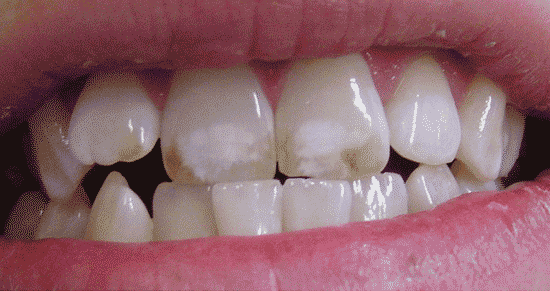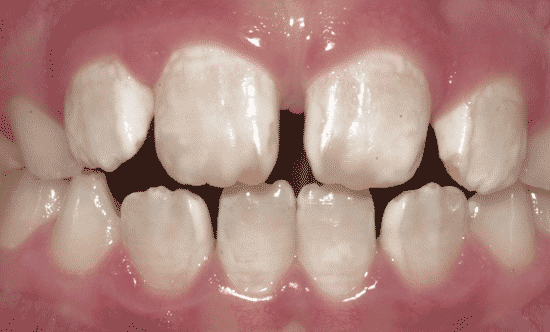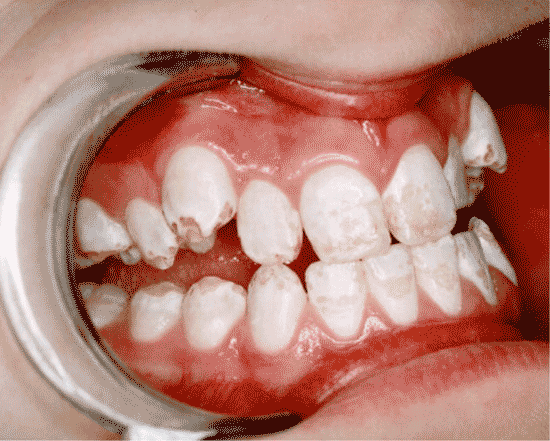Diagnosis
Dental fluorosis comes in various stages of severity. The severity of fluorosis increases with the dose of fluoride the child consumes, and can be exacerbated by nutritional deficiencies and kidney impairment. Dentists generally use the “Dean Index” to diagnose the severity of a child’s fluorosis. Developed in the 1930s and 1940s by the “Father of Fluoridation” (H. Trendley Dean), the Dean Index classifies fluorosis into five types: “questionable,” “very mild,” “mild,” “moderate,” and “severe.”
Dean’s use of the descriptors “very mild” and “mild” to characterize the first definitive stages of fluorosis is problematic. A tooth with “mild” fluorosis is defined as one which has cloudy white staining (e.g., specks, streaks, splotches) on up to 50% of the tooth’s surface. While dentists have long dismissed the esthetic implications of “mild” fluorosis, research over the past two decades has consistently shown that the general public finds “mild” fluorosis highly objectionable when present on the front two teeth.
Another problem with the Dean Index is that it’s five broad categories of fluorosis fail to distinguish significant variations that can occur within each stage. Researchers have thus developed more finely tuned diagnostic guides. One such guide is the “Thylstrup-Fejerskov Index,” (TF Index), and another is the “Total Surface Index of Fluorosis” (TSIF).
The following is Dean’s criteria for diagnosing dental fluorosis:
“Questionable” Fluorosis
Questionable: “The enamel discloses slight aberrations from the translucency of normal enamel, ranging from a few white flecks to occasional white spots. This classification is utilized in those instances where a definite diagnosis of the mildest form of fluorosis is not warranted and a classification of ‘normal’ is not justified.”
“Very Mild” Fluorosis
Very Mild: “Small opaque, paper white areas scattered irregularly over the tooth but not involving as much as 25% of the tooth surface. Frequently included in this classification are teeth showing no more than about 1-2 mm of white opacity at the tip of the summit of the cusps of the bicuspids or second molars.” (Photo by the Center for Natural Dentistry)
“Mild” Fluorosis
Mild: “The white opaque areas in the enamel of the teeth are more extensive but do not involve as much as 50% of the tooth.” (Photograph by Hardy Limeback DDS, PhD)
“Moderate” Fluorosis
Moderate: “All enamel surfaces of the teeth are affected, and the surfaces subject to attrition show wear. Brown stain is frequently a disfiguring feature.”(Photograph by Hardy Limeback, DDS, PhD)
Severe Fluorosis
Severe: “All enamel surfaces are affected and hypoplasia is so marked that the general form of the tooth may be affected. The major diagnostic sign of this classification is discrete or confluent pitting. Brown stains are widespread and teeth often present a corroded-like appearance.” (Photograph by Hardy Limeback, DDS, PhD)








